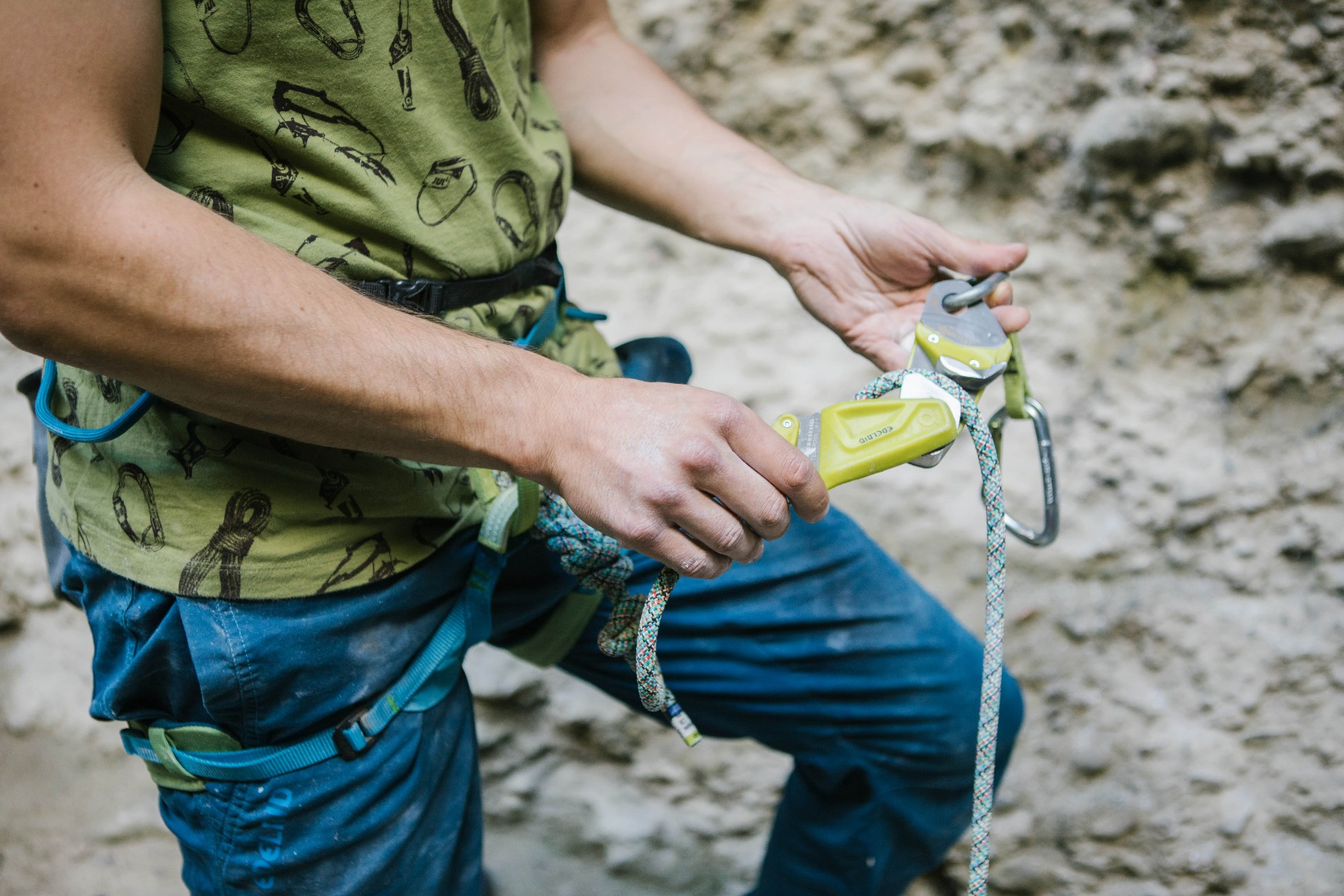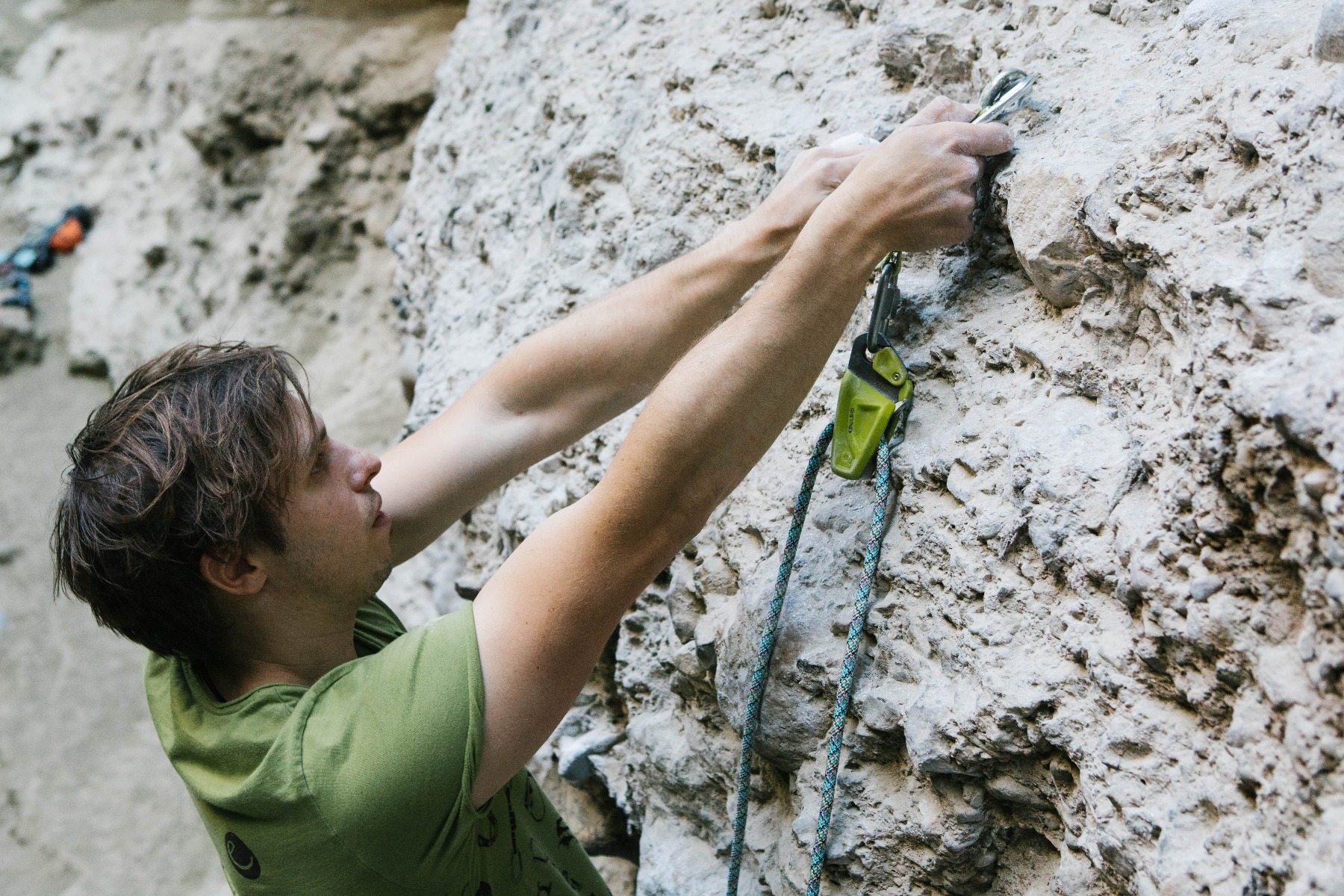The Edelrid Ohm brake is a very useful tool for both outdoor and indoor climbing when there is a significant weight difference between the belayer and the climber. Its function allows for much safer climbing, especially in the first few meters of the route, where a long or dynamic fall could mean hitting the ground. The Ohm also prevents the possibility of a belayer much lighter than the climber being thrown against the rock or the first bolt.
What is the Ohm?
The Edelrid brake is connected to a quickdraw attached to a carabiner via a 10cm sling: after passing the rope through it while still on the ground, it replaces the first bolt both outdoors and indoors (even when fixed bolts are present). In the event of a fall, the brake reduces the sliding of the rope under tension. When the climber is climbing beyond the first bolt, the Ohm does not block the upward sliding of the rope in any way.

When to Use the Ohm
We can use the Ohm in all those situations where the weight difference between the two climbers is significant (especially when the belayer is lighter than the climber) and it leads to a much longer fall for the climber, as well as a possible loss of control of the rope. In addition to coming into play when the rope is under tension in the event of a fall, the Ohm also makes the descent from the anchor much smoother and without jerks.

Which Ropes to Use It With
The Ohm can be used with single ropes ranging from 8.9mm to 11mm; its lightness completely replaces the practice of attaching weights to the belayer, a solution that is impractical, especially outdoors. Its braking function does not damage the rope in any way.
